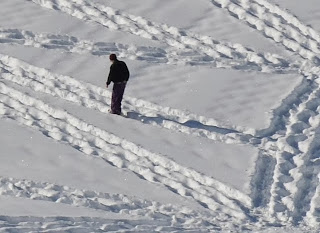English expert Simon Beck never stops to astonish us with his all-encompassing paintings of geometrical styles in snow. Each creatively spectacular piece, which Beck personally makes by strolling through the snow and making behind his track prints, contributes an exclusive element to its natural scenery. Walking myriad kilometers on end, the devoted specialist controls to produce amazingly shaped and intricate designs on the soft, white bed of snow that includes kilometers upon kilometers of land.
Simon Beck skills to not only travel through the slippery surface and icy temperature ranges but to also keep a record of his steps is extremely amazing. The superbly plotted details of the artist's perform supplement the untouched expanse of snow and ice assigned mountains that include them each season. With the next winter time just around the corner, we're thrilled to see Beck's next sequence of creative snow events.

















































